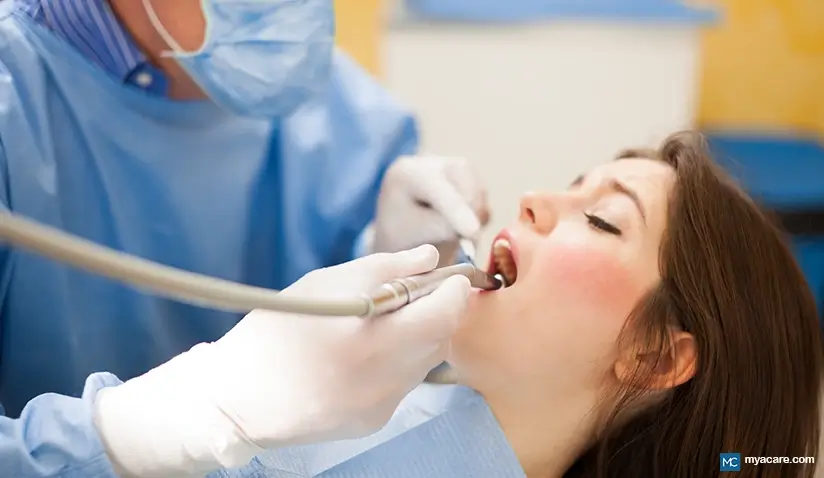Oral Manifestations of COVID-19

The rapid spread of COVID-19 has created a state of emergency and poses a challenge for health authorities worldwide. As you may know, the disease is caused by the novel SARS-CoV-2 virus that belongs to the subfamily of the beta-coronaviruses and is composed of a single large RNA strand. It is contagious and can spread through direct contact or through saliva in the form of small droplets and aerosols while sneezing, coughing, or talking. Although most of the individuals are aware of symptoms such as fever, cough, throat pain, body pains, and nausea, not many are aware of the oral implications of the disease. In this article, we discuss the oral manifestations of COVID-19. Read on.
Epidemiology
At the time of writing, COVID-19 had affected ~45 million people globally, with the numbers increasing every minute. The mortality rate is higher in adults above 65 years of age. Individuals with medical disorders such as diabetes, cardiovascular disorders, renal disorders, malignancies, and neurological disorders have a higher predilection to the disease. About 80% of cases are reported to be mild, ~15% are severe, and the rest 5% are critical. Such cases have pneumonia and require ventilators and hospitalization in intensive care units (ICUs). The most common oral manifestation is the loss of taste, reported in ~45% of patients.
Clinical features
The most common findings include fever, dry cough, shortness of breath, loss of smell, body aches, headaches, sore throat, confusion, diarrhea, hemoptysis (coughing up blood), chest pain, and pneumonia. Signs of pneumonia include decreased oxygen saturation levels (less than 92%), reduced blood gas levels, multiple opacities, or patchy consolidation in chest X-ray or CT scans (evident 1-2 weeks after the appearance of symptoms).
In the oral cavity, the following symptoms are commonly observed:
- Reduction or loss of taste sensation
- Oral ulcerations
- Oral blisters
- Dryness of mouth (Xerostomia)
- Inflammation of gums (Gingivitis)
- Reddish or purple bleeding spots (Petechiae)
- Fungal infections (Candidiasis)
The above mucosal lesions may vary in location, size, color, appearance, and quantity.
The most common sites affected by COVID-19 are the tongue, hard palate (roof of the mouth), and gums. Other sites include lips, inner lining of cheeks, and soft palate.
Etiology
The cause of oral lesions is unclear and multifactorial. While the research is still evolving, possible explanations for oral manifestations are listed below.
- Research suggests that coronavirus enters the human cells through receptor angiotensin-converting enzyme 2 (ACE2). These receptors are present in the lungs, in oral mucosal cells (skin lining the oral cavity), and in salivary glands. The appearance of oral lesions is believed to be due to direct or indirect action of COVID-19 on oral mucosal cells and salivary glands.
- The use of anti-viral drugs causes side effects in the oral cavity such as stomatitis (inflammation of the mouth), mouth ulcers, and dryness of the mouth. So, these oral manifestations could be a result of anti-viral therapy used to treat severe cases of COVID-19.
- Oral manifestations could be the result of the development of opportunistic infections such as herpes and other bacterial infections that thrive in a compromised immune system of COVID-19 patients.
- The increased psychological burden due to restricted social and physical interaction, increased work pressure during lockdown, or reduced oral care can result in several oral mucosal lesions.
- Severely ill and hospitalized individuals tend to have reduced oral care due to intubation, ventilation, or tracheostomy. Decreased oral care encourages the growth of microorganisms and reduces the flow of saliva, causing oral lesions and several other complications that can affect the lower respiratory tract.
Diagnosis
- Clinical examination: The presence of oral lesions, especially loss of sense of taste, dryness of mouth, facial pain, and loss of sense of smell can indicate COVID-19.
- Laboratory findings: The early and least expensive investigation to detect the presence of COVID-19 include blood examination. The following changes can be observed during blood examination:
- Decreased lymphocyte count with or without an overall decrease in leukocyte (white blood cells) count.
- In severe cases, individuals may have a high neutrophil to lymphocyte ratio (NLR).
- Increased erythrocyte sedimentation rate.
- Increased levels of C-reactive protein and high levels of CD8T cells.
- Increased levels of lactate dehydrogenase, ferritin, D-dimer, and creatine kinase.
- An increase in liver enzymes or creatinine is indicative of multi-organ failure.
- Radiological findings: The presence of multiple opacities in chest X-ray or CT scan is indicative of COVID-19.
Treatment:
For oral lesions, the use of topical, systemic antifungal, or corticosteroid therapy is recommended. Alcohol free mouth washes with chlorhexidine or tetracyclines are also prescribed.
The presence of oral lesions can aid in better understanding of the management of the COVID-19 disease. However, due to limited literature, it is difficult to confirm if oral lesions are new signs of COVID-19 or secondary outcome of the disease.
To search for the best healthcare providers worldwide, please use the Mya Care search engine.

Dr. Shilpy Bhandari is an experienced dental surgeon, with specialization in periodontics and implantology. She received her graduate and postgraduate education from Rajiv Gandhi University of Health Sciences in India. Besides her private practice, she enjoys writing on medical topics. She is also interested in evidence-based academic writing and has published several articles in international journals.
Sources::
Featured Blogs



